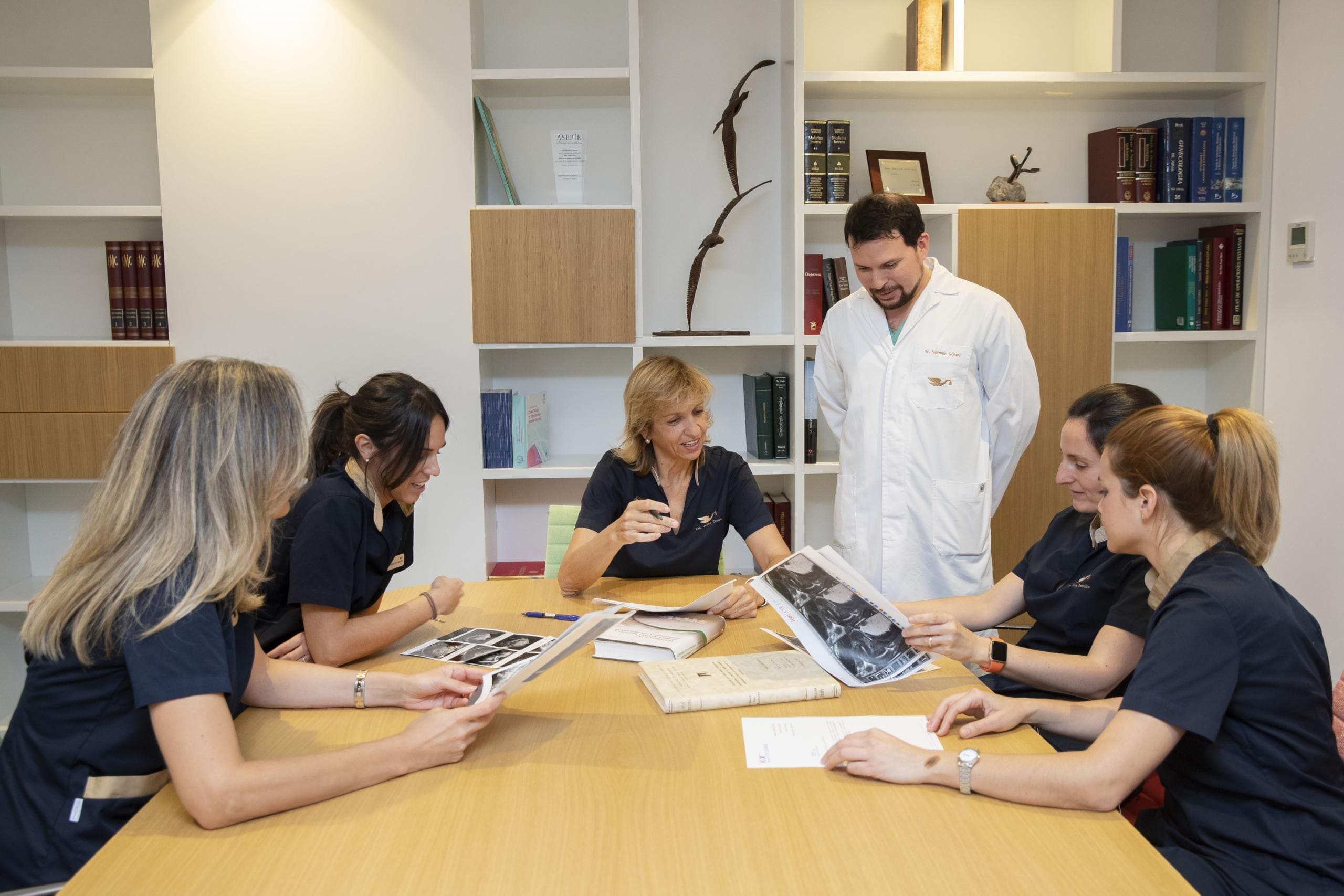What is unexplained infertility?
Unexplained infertility is generally a diagnosis given to couples when, after performing basic female and male fertility tests, the specialist has not found conclusive evidence of what is preventing pregnancy.
Infertility can be defined as the inability of a couple to achieve pregnancy after more than one year of unprotected sexual intercourse. After this period, we recommend beginning a basic fertility study comprising examinations and diagnostic tests for both partners.
Statistically, 30% of infertility is attributed to female causes, 30% to male causes, 20% to mixed causes and, when the couple does not fall into any of these categories, then it is diagnosed as unexplained infertility.
All infertility has a cause.

At Equipo Juana Crespo, we believe that all cases of unknown infertility have an underlying cause.
Therefore, couples experiencing this situation should know that their chances of pregnancy are not lower than those of a couple with infertility due to an already identified cause.
The challenge in this case is to identify the cause that is preventing fertility to find the appropriate treatment. This is relative sterility, as the possibility of finding an adequate response depends to a large extent on how the diagnoses are made, the specialists involved, and the clinic where they are performed.
Remember that the female and male reproductive apparatus is a system where all the organs and participants have specific functions, but they must also be perfectly synchronised for reproduction to take place.
The most common reasons for unexplained infertility are related to multifactorial causes, i.e., causes where several organs are affected to a greater or lesser extent, and which are difficult to diagnose with conventional or basic fertility tests. Poor egg or sperm quality due to genetic causes, implantation problems due to poor endometrial receptivity, and structural problems in the uterine cavity are other potential causes.
The most common causes for unexplained infertility are related to egg and sperm quality. Poor quality eggs and/or sperm with genetic alterations can lead to difficulties in fertilization and/or the formation of an abnormal or suboptimal quality embryo to result in a live new-born. Implantation problems due to poor endometrial receptivity or structural problems of the uterine cavity also account for a significant number of unexplained infertility cases.
Unexplained infertility diagnostic procedures
To establish an adequate treatment for unexplained infertility, a series of diagnostic tests must first be performed to detect the origin of the problem preventing pregnancy.
The protocol for diagnosing unexplained infertility consists of performing different types of tests and analyses:
Treatments in cases of unexplained infertility
Depending on the results obtained, different types of treatments will be considered to deal with unexplained infertility.
Frequently Asked Questions
Yes. With an accurate diagnosis that provides favourable results for the right treatment and does not reveal that natural gestation is impossible, pregnancy is possible.
Each treatment must be personalised and the choice of one or another will depend on the results of the different diagnostic tests.
Potential treatment options include In Vitro Fertilization, Revitalize or egg donation, depending on the results of the tests and considering the most advisable treatment in each case.
Statistically speaking, it is established that 30% of infertility cases are due to male causes, 30% to female causes, and 20% to mixed causes.
The other 20% are due to unknown causes that do not fall under common diagnoses. Such cases are unexplained infertility.





